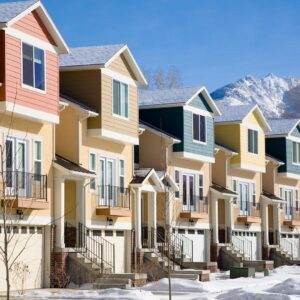Commonly Asked Questions
Our team at Complete Building Inspections is dedicated to providing comprehensive inspections for property owners and potential buyers. Our mission is to uncover any potential problems so that decisions can be made confidently. We understand that this process can often be complex, so we’ve compiled a list of common questions about how we conduct our inspections and what you can expect from us.
General Property Inspections
A property inspection is a thorough examination of a home, commercial building, or other structure to assess its condition and occupant safety. Inspectors look for structural defects, water damage, electrical systems, plumbing issues, fire hazards and building code violations.
They will also inspect the interior and exterior of the home or building for any signs of disrepair or potential problems. The purpose of an inspection is to provide an accurate assessment of a property’s condition so that buyers and sellers can make more informed decisions.
Property inspections are important for multiple reasons.
For buyers, it allows them to make an educated decision about a property before they commit to the purchase. It can alert homebuyers of any potential problems that may require costly repairs or renovations in the future.
Additionally, it gives sellers peace of mind that their property is up to code and safe for occupancy.
For lenders and financial institutions, they require proof that a home meets all legal requirements before providing a loan. Ultimately, property inspections are important because they provide an objective and detailed assessment of any given property so that those involved in buying or selling can make better decisions.
The best time to schedule a property inspection is when the contract terms are agreed upon and accepted by both parties. When the buyer and seller have mutually agreed upon all the conditions of purchase, a home inspection should be scheduled as soon as possible.
Property inspections typically take between 1–3 hours, depending on the size of the home, with many real estate agents recommending that buyers get multiple bids and compare prices before scheduling. Additionally, it’s important to remember that any problems uncovered during an inspection can affect the final sale price, so scheduling one quickly can help avoid any potential issues or delays down the line.
When comparing inspection bids, it’s important to pay close attention to the details of each. Start by asking the inspector for a list of services they offer and what their fees are. Additionally, make sure to read over any contract or agreement carefully before agreeing, as some inspectors may charge extra fees for specific services or additional reports. It’s also important to compare how much experience and certifications the inspectors have, as this can give you an idea of the quality of their work and ensure that you get a thorough, accurate report. Finally, be sure to ask your inspector if they stand behind their work in case any problems arise after making the purchase.
Mold Inspections
Mold is a type of fungus which can cause serious damage to the structure and air quality of a home. It is often discovered during property inspections, as it requires special equipment and knowledge to detect. Inspectors will typically look for any visible signs of mold, such as discolored growths on walls or ceiling, musty odors or dampness in the air, and water damage from leaks or floods. If any problems are detected, further testing may be recommended to determine the extent of the issue, as well as what steps need to be taken for remediation.
Mold can have serious effects on human health, depending on the type and amount of exposure. The most common health effects include an increased risk of asthma and other respiratory problems, skin irritation, lower energy levels, headaches and migraines, and even memory loss in some cases. It is important to take any sign of mold seriously and remove it as soon as possible to ensure the safety of anyone living in the home.
The first step in determining whether you have a mold problem in your home is to look for visible signs of mold growth. Common indicators include discolored growths on walls or ceiling, musty odors, dampness in the air, excessive moisture from leaks or floods, and water stains on any surface. In addition to these visual clues, you should also pay attention to any health changes you or other occupants may be experiencing. If there’s any suspicion that mold could be present, it’s important to seek professional help for further testing and remediation if necessary.
The most effective way to get rid of mold is to take steps to eliminate sources of moisture and improve air circulation. Look for water leaks and fix them, use dehumidifiers or fans to reduce dampness in the air, and make sure that any wet items are dried as soon as possible. If you’re dealing with a more serious infestation, it’s best to consult a professional who can help you identify the source of the problem and take the necessary steps for removal.
Common places to find mold in the home include basements and crawl spaces, bathrooms, kitchens, laundry rooms, attics, behind wallpaper or paneling, and in window frames.
Mold can also grow on clothing, furniture, and other items that stay damp for an extended period of time. If you suspect mold may be present in your home, it’s important to try to identify the location as soon as possible and take steps to eliminate the source of moisture and clean up the contaminated area.
Mold can begin to grow on damp materials within 24–48 hours. However, the length of time depends on several factors such as temperature, humidity and the type of material. Generally, mold is most likely to grow on items that remain damp for an extended period of time (e.g. over one week). To prevent mold growth in your home or other areas, it’s important to try to keep things as dry as possible and fix water leaks immediately.
Residential Structural Inspections
A structural inspection is an assessment of the condition of a structure, generally performed by a professional engineer or other qualified individual. The purpose of these inspections is to identify any potential structural issues that could affect the safety, stability, and longevity of the building. During the inspection, visual inspections, measurements and tests may be conducted in order to evaluate the condition of a building’s foundation, walls, roof and other components.
A structural inspection typically involves a thorough examination of a structure’s foundation, walls, roof, and other components by a qualified individual. During the inspection, visual inspections, measurements and tests will be conducted to assess the condition of the building and identify any potential structural issues that could affect its safety, stability, or longevity. The inspector may also look for signs of water damage, rot or decay in wood framing or siding, as well as damage caused by animals like termites. They may also check for pipes or wiring that are not up to code.
The cost of a structural inspection can vary greatly depending on the size and scope of the project. Generally, it will range from $250-$500 for smaller buildings or homes and up to $2,000 for larger commercial projects. Additionally, some areas may require additional fees for testing or other components.
If your home fails a structural inspection, it is important to address the issues immediately. Depending on the severity of the issue, you may need to contact a contractor or structural engineer who can provide advice and repair services in order to bring the structure up to code. If there are any concerns about safety, it is always best to consult an expert for guidance.
Common problems found during a structural inspection include things like improper wall or foundation support, water damage, rot or decay, and inadequate ventilation. Structural inspections may also reveal pest infestations and other environmental hazards that can be hazardous to the safety of the structure. In addition, inspectors will look for any signs of code violations or dangerous wiring that could lead to electrical fires.
It is recommended that you have your home’s structure inspected at least once every five years, or after any major changes in weather conditions. In some regions, it is required to have the structure inspected at least every two years. Additionally, you may need to have additional inspections done if a house has experienced any major renovation work or if you’re making any changes to its foundation.


 Multifamily property inspections require special attention to detail and an understanding of these types of buildings’ unique needs. Your certified inspector has been specifically trained in this area to ensure they can accurately assess a multifamily property’s condition.
Multifamily property inspections require special attention to detail and an understanding of these types of buildings’ unique needs. Your certified inspector has been specifically trained in this area to ensure they can accurately assess a multifamily property’s condition. When considering buying a condominium, it pays to be in the know. One of the most valuable pieces of information you’ll have access to is based on possible prior inspections at your condominium community.
When considering buying a condominium, it pays to be in the know. One of the most valuable pieces of information you’ll have access to is based on possible prior inspections at your condominium community. Townhome property inspections are essential for homeowners or potential buyers of townhomes. When selecting an inspector, it is necessary to look for an individual who understands the unique qualities of a townhome. This includes looking for signs of water damage that can occur from the shared walls of nearby units and ensuring electrical wiring is up to code, given the higher density living present in townhome developments.
Townhome property inspections are essential for homeowners or potential buyers of townhomes. When selecting an inspector, it is necessary to look for an individual who understands the unique qualities of a townhome. This includes looking for signs of water damage that can occur from the shared walls of nearby units and ensuring electrical wiring is up to code, given the higher density living present in townhome developments. New construction property inspections can provide peace of mind for a homeowner — especially if the home is brand new. While construction workers are usually required to complete certain safety and code inspections before they turn the building over to the owner, there’s no comparison between the partial inspections during the building process and those done in a private inspection.
New construction property inspections can provide peace of mind for a homeowner — especially if the home is brand new. While construction workers are usually required to complete certain safety and code inspections before they turn the building over to the owner, there’s no comparison between the partial inspections during the building process and those done in a private inspection.